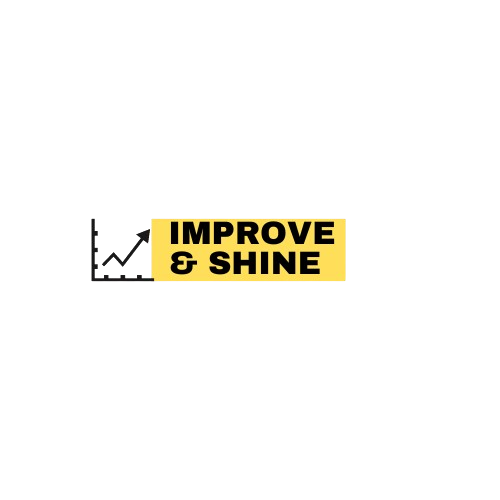In today’s world, managing time is like having a superpower. Ever felt overwhelmed by your to-do list? You’re not alone. Many of us get caught in a cycle of demands and distractions.
But here’s the truth: learning to manage time well is not taught in school. It’s a crucial life skill that can help you take back your day, lower stress, and find a better balance between work and life.

By learning these time management tips, you can boost your productivity. This will improve your life at work and at home. Let’s discover how to change your daily routine and make the most of your time.
Table of Contents
Key Takeaways
- Learning to manage time is an essential skill often not covered in formal education.
- Effective time management can lead to improved work-life balance.
- Time management skills help reduce stress and enhance decision-making.
- Identifying time wasters is the first step in effective time management.
- Setting clear goals helps prioritize tasks and focus efforts.
- Using technology can streamline your time management process.
- Regular self-assessment can help you adjust your strategies as needed.
Understanding Time Management
Time management is about planning and controlling how much time you spend on things. It helps you focus on what’s important and avoid distractions. This way, you make the most of your time.
What is Time Management?
Time management is about organizing your tasks well. It helps you handle many things at once and stay focused. When done right, it boosts your productivity and makes you feel accomplished every day.
Importance of Time Management
Time management is very important. It lets you do more in less time. This reduces stress and helps you stay focused. It also improves your work-life balance and can lead to career success.
Common Time Management Myths
There are many wrong ideas about time management. Some think being busy means you’re productive. But being busy doesn’t always mean you’re doing the right things. Other myths say multitasking is good or that only tools can help with time management. It’s important to know these myths are wrong to manage your time well.
Identifying Your Time Wasters
Knowing what distracts you every day is key to good time management. Distractions and time wasters can sneak into your routine without you noticing. They can really hurt your productivity. Spotting these issues is the first step to getting back valuable time in your day.
Recognizing Distractions
In our digital world, many distractions are common. Here are some examples of time wasters:
- Social media browsing
- Unproductive meetings
- Constant email notifications
- Persistent smartphone alerts
- Multitasking without clear priorities
By knowing these common distractions, you can take steps to reduce their effect on your productivity.
Tools to Track Time Usage
Using time tracking tools can really help you see how you spend your time. Apps like Toggl and RescueTime track your activities and show where you can improve. These tools give you insights into your daily habits, helping you cut down on time wasters.
Knowing where your time goes lets you make changes in your routine. By being aware of your time use, you can make better choices and boost your productivity.
Setting Clear Goals
Setting clear goals is key to good time management. It helps you make a plan for success. You can focus and stay motivated with both short-term and long-term goals.
Differentiating Between Short-Term and Long-Term Goals
Short-term goals are quick wins, done in days or weeks. They help you reach bigger goals. Long-term goals take months or years to achieve. Knowing the difference helps you make plans that work.
The SMART Goals Approach
Using SMART goals can make your goal-setting strategies better. SMART means Specific, Measurable, Achievable, Relevant, and Time-bound. This way, you can track your progress easily.
For instance, “I want to be fit” is not a SMART goal. But “I will exercise for 30 minutes, five times a week for three months” is. This makes your goals clear and helps you stay on track. For more tips, check out time management advice.
Prioritization Techniques for Effective Management
Understanding how to prioritize is key to effective management. These strategies help manage time better, letting you use your resources wisely. The Eisenhower Matrix and the ABCD Prioritization Method are two great tools for sorting tasks by urgency and importance.
The Eisenhower Matrix
The Eisenhower Matrix divides tasks into four areas: urgent and important, important but not urgent, urgent but not important, and not urgent or important. It helps you focus on what really matters. Tasks that are both urgent and important need your immediate attention. Tasks that are important but not urgent can be planned for later success.
This matrix makes it easy to manage your time effectively.
ABCD Prioritization Method
The ABCD method makes prioritizing tasks simple. It assigns a letter to each task based on its priority:
- A: Must do – critical and time-sensitive tasks.
- B: Should do – important but not urgent tasks.
- C: Nice to do – tasks that are not urgent or important.
- D: Delegate – tasks that can be given to others.
This method helps you focus on the most important tasks. It boosts your productivity and satisfaction.
| Prioritization Techniques | Focus | Benefits |
|---|---|---|
| Eisenhower Matrix | Urgency vs. Importance | Clarity on task urgency and importance leading to better time utilization. |
| ABCD Method | Task Categorization | Efficient prioritization of tasks based on urgency and significance. |
Using these techniques makes managing your time and tasks easier. It helps you achieve your goals more effectively.
Creating a Realistic Schedule
Creating a realistic schedule is key for good time management. It means balancing your daily and weekly plans to get tasks done well. Each method has its own strengths, fitting different productivity styles. Knowing the difference can make you more effective.
Daily vs. Weekly Planning
Daily planning is about tackling tasks right away. It lets you adjust as things change. This way, you can quickly shift your focus back to what’s important.
Weekly planning, on the other hand, looks at the big picture. It helps you see how daily tasks fit into your long-term goals. This makes managing time over the long haul easier.
Time Blocking Techniques
The time blocking method is a top choice for managing time. It involves setting specific times for different activities. This helps you stay focused and avoid distractions. Here’s how to use it:
- Identify your tasks: Make a list of all the things you need to do today or this week.
- Estimate time requirements: Guess how long each task will take.
- Block out time slots: Put these tasks in your calendar, making sure to include breaks.
- Stick to the plan: Treat these blocks as non-negotiable appointments to boost your discipline.
By using daily and weekly planning, and time blocking, managing your time becomes easier. This leads to better productivity and less stress.
Mastering the Art of Delegation
Effective team management is all about delegating tasks. Learning to delegate frees up time for more important tasks. It also helps create a team that works well together. Knowing why delegation is key is the first step to better productivity.
Why Delegation is Important
Delegating tasks is crucial for better time management. It lets people focus on what they do best, leading to success. Delegation done right:
- Increases productivity by letting team members do what they’re good at.
- Buils trust among team members, making the work environment better.
- Helps develop skills as people take on new challenges.
How to Delegate Tasks Effectively
To manage teams well through delegation, follow these steps:
- Identify the right tasks to delegate by looking at workload and team strengths.
- Choose the right team members for the tasks based on their skills.
- Give clear instructions so everyone knows what to do and can ask questions.
- Set deadlines to keep everyone on track and accountable.
Using these strategies improves not just individual work but the team’s performance too. By mastering delegation, leaders can build a workplace that values growth and teamwork.
| Benefits of Delegation | Impact on Team |
|---|---|
| Enhanced time management skills | Better focus on key objectives |
| Increased morale | Boosted team spirit and collaboration |
| Opportunities for skill building | Higher overall competency levels |
Embracing the Benefits of Breaks
Adding breaks to your work can really help your mental health and productivity. Learning how to use time wisely, like with the Pomodoro Technique, keeps you sharp and energized. Breaks fight off tiredness and boost your creativity.
The Pomodoro Technique
The Pomodoro Technique is a well-known method. It uses 25-minute work sessions followed by a short break. This method helps you stay focused and refreshed. It prevents burnout and keeps your mind sharp.
Importance of Mental Rejuvenation
Regular breaks are key for mental refreshment. They help you do your best work. Without breaks, your productivity and mental health can suffer. For more on the benefits of breaks, check out this source. Breaks lead to more creativity and better goal achievement.
Using Technology to Your Advantage
In today’s fast-paced world, using technology for productivity is key. Time management apps help organize tasks, improve teamwork, and track progress. By using these tools daily, you can make the most of your time and achieve your goals.
Best Apps for Time Management
Many time management apps offer great features. They cater to different needs, helping everyone find the right fit. Here are some top picks:
- Todoist: It’s easy to use and lets you make task lists, set deadlines, and organize projects.
- Trello: This app helps teams work together by organizing tasks into boards and lists.
- Google Calendar: It’s great for scheduling, reminders, and planning events, and works well with other Google tools.
Automating Repetitive Tasks
Automation in time management can make workflows smoother. Tools like IFTTT and Zapier automate tasks, saving time and mental energy. They can send emails, update spreadsheets, and more, without needing you to do it manually.
Using these apps and tools can unlock your productivity potential. They help you stay focused and reduce stress, leading to a better work-life balance.
| App Name | Key Features | Platforms |
|---|---|---|
| Todoist | Task lists, deadlines, project categorization | Web, iOS, Android, Windows |
| Trello | Visual task management, team collaboration | Web, iOS, Android |
| Google Calendar | Scheduling, reminders, event planning | Web, iOS, Android |
Cultivating a Productive Mindset
Creating a time management mindset means changing how you think. It’s about believing in yourself and staying strong mentally. This mindset helps you focus and stay motivated, making it easier to get things done.
The Role of Positive Thinking
Positive thinking is key to good time management. It boosts your confidence and changes how you see challenges. People who think positively tend to stick to their goals and manage their time better.
Using affirmations or being around supportive people can help keep a positive outlook.
Strategies to Overcome Procrastination
Beating procrastination is vital for staying productive. There are effective ways to overcome it. Here are a few:
- The Two-Minute Rule: Do tasks that take under two minutes right away, instead of putting them off.
- Chunking Tasks: Divide big tasks into smaller steps to make them less overwhelming.
- Set Clear Deadlines: Give yourself specific times to finish tasks to stay on track.
- Visualize Success: Imagine yourself completing tasks to boost motivation and focus.
Using these strategies can help you overcome mental blocks. It helps you develop a mindset that values productivity and positivity.

Reviewing and Adjusting Your Approach
Mastering time management means regularly checking and tweaking your methods. Doing a time management check-up helps you see what’s working and what’s not. It lets you spot patterns and areas to get better, helping you boost your productivity.
Regular Self-Assessment Techniques
Keeping a daily or weekly journal is a great way to self-assess. It tracks your tasks and how much time you spend on them. Looking back at your successes and setbacks helps you see how far you’ve come and what’s holding you back.
Also, setting aside time each month for a review is key. It helps you adjust your priorities based on what you’ve learned. This keeps you focused on your goals.
Adapting Your Strategies to Fit Your Life
Being flexible with time management is crucial. Life’s demands change, and so should your approach. Remember, what worked before might not now. So, be ready to change your methods as needed.
By always looking to improve, you can fine-tune your time management. This way, you stay productive no matter what life throws your way.
FAQ
How do you learn to manage time effectively?
To manage time well, first understand what’s important to you. Then, use time management techniques that fit your life. Start by seeing how you spend your time and find ways to do better.
What are some essential time management tips?
Key tips include setting clear goals and using the Eisenhower Matrix to sort tasks. Break down big tasks into smaller steps. Also, use time-blocking for different activities. Apps can help keep you organized too.
Why is effective time management important for students?
For students, good time management is key. It helps balance school, activities, and personal life. It boosts grades, lowers stress, and improves work-life balance.
What are the common time management strategies?
Common strategies include setting SMART goals and prioritizing tasks. Create realistic schedules and use tools to track time. Delegation is also important in teamwork. These help you work better and meet goals.
How can I identify my time wasters?
To find time wasters, log how you spend your day. Look for patterns, like too much social media or putting off tasks. This shows where you can do better.
What is the Pomodoro Technique, and how does it help with time management?
The Pomodoro Technique involves working in short, focused periods (25 minutes) with breaks. It boosts focus and productivity, reducing burnout.
What are some effective time management techniques for busy professionals?
Busy pros can use apps to organize tasks and the ABCD method for prioritizing. Set boundaries to avoid distractions. Regular self-assessment helps adjust strategies to meet changing needs.
How can I automate repetitive tasks to save time?
Use tools like IFTTT or Zapier to automate routine tasks. This frees up time and energy for more important tasks.
What role does a positive mindset play in time management?
A positive mindset is vital for time management. It boosts focus, motivation, and resilience. A positive outlook helps fight procrastination and stay on track.
How often should I review my time management strategies?
Review your strategies weekly or monthly. This helps see what works and what needs improvement. It keeps your approach aligned with your goals and responsibilities.
Check also the following posts:

